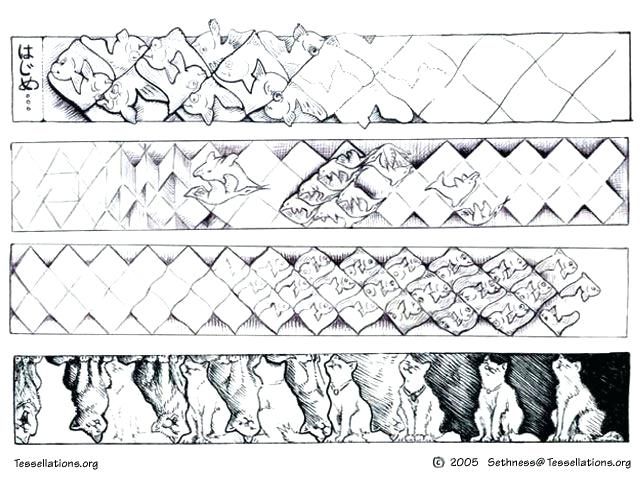

#TESSELLATION ART WORKSHEET HOW TO#
You should model or demonstrate it for the students, especially if they are not familiar with how to use our computer applets. You may choose to lead the students in a short discussion about tessellations in the world.Įxplain to the students how to do the assignment. I want to show you a little bit about the activity first. We are going to use the computers to learn about them, but please do not turn your computers on or go to this page until I ask you to.Today, class, we will be talking more about tessellations.Let the students know what it is they will be doing and learning today. Finally, see what they already know about color and optical illusions and how they affect perception.See if the students are familiar with symmetry, and describe to them the different types present in tessellations.If needed, present the information in the introduction to tessellations discussion. Ask students what they know about tessellations.Remind students what has been learned in previous lessons that will be pertinent to this lesson and/or have them begin to think about the words and ideas of this lesson: This lesson introduces students to the following terms through the included discussions: Visual Patterns in Tessellations Worksheet.Copies of supplemental materials for the activities:.use a browser, such as Netscape, for experimenting with the activities.perform basic mouse manipulations such as point, click and drag.Technological: Students must be able to:.be able to recognize types of symmetry after they are introduced.recognize and apply geometric ideas and relationships in areas outside the mathematics classroom, such as art, science, and everyday life.use geometric models to represent and explain numerical and algebraic relationships.use visual tools such as networks to represent and solve problems.Use visualization, spatial reasoning, and geometric modeling to solve problems examine the congruence, similarity, and line or rotational symmetry of objects using transformations.describe sizes, positions, and orientations of shapes under informal transformations such as flips, turns, slides, and scaling.create and critique inductive and deductive arguments concerning geometric ideas and relationships, such as congruence, similarity, and the Pythagorean relationshipĪpply transformations and use symmetry to analyze mathematical situations.understand relationships among the angles, side lengths, perimeters, areas, and volumes of similar objects.precisely describe, classify, and understand relationships among types of two- and three-dimensional objects using their defining properties.The activities and discussions in this lesson address the followingĪnalyze characteristics and properties of two- and three-dimensional geometric shapes and develop mathematical arguments about geometric relationships examined tessellating patterns in the world around them.learned about several types of polygons.Upon completion of this lesson, students will have: The activity and discussions may be used to develop students' understanding of polygons and symmetry as well as their ability to analyze patterns and explore the role of mathematics in nature and world culture. This lesson allows students to examine the mathematical nature of art, tilings and tessellations.


 0 kommentar(er)
0 kommentar(er)
